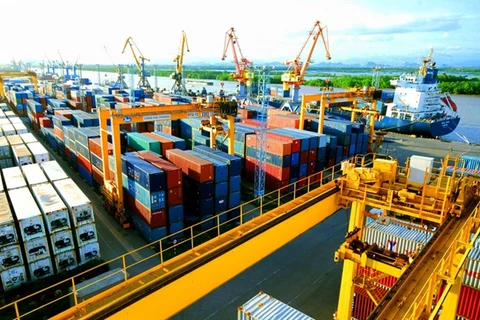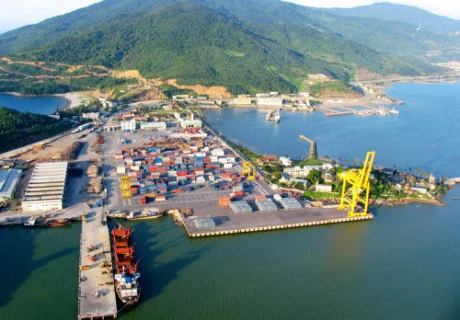HCM City (VNA) - A detailed plan on logistics development, especially on transport connectivity, is needed to set goals for industrial production, agriculture and imports-exports, experts have urged.
Ho Xuan Lam, Deputy Director of the HCM City Investment and Trade Promotion Centre (ITPC), said at a recent seminar on “Improving the Efficiency of Logistics Services in Vietnam” held in Ho Chi Minh City, that the city had an advanced system of seaports and warehouses and played a “leading role in cargo transport in the southeastern region due to its prime geographic location”.
In 2017, the logistics sector of the city reached 91.541 trillion VND (4.03 billion USD), accounting for 8.6 percent of the Gross Regional Domestic Product (GRDP) and 14.8 percent of the service sector, according to official statistics.
Logistics is the second most important industry in the nine key services of the city with growth of 10.84 percent over 2016.
However, the development of logistics in the city and neighbouring provinces face obstacles due to overloaded infrastructure, mostly roads and ports.
Pham Thi Thuy Van, deputy marketing director of the Sai Gon Newport Corporation, said that most logistics facilities were located in areas around Cat Lai, Thu Duc, Song Than, Linh Trung and neighbouring areas of Dong Nai Bridge.
HCM City in particular has 11 container ports covering a total area of 310 ha in addition to 7,000 sqm of piers.
The concentration of all the logistics facilities has created a pressure on the traffic system, which would incur costs. For instance, the average storage time of imports has also increased due to slow release of goods.
In addition, Van said a number of bridges in HCM City had low clearance levels, causing difficulties for transport by waterway and increasing transport costs for businesses.
Dao Trong Khoa, vice president of the Vietnam Association of Logistics Service Enterprises (VLA), said factors contributing to the high cost of logistics, included costs for transporting goods by road and surcharges at seaports and limits on seaport infrastructure, among others.
To reduce logistics costs, transport costs must be reduced first as transport accounts for 50 percent of logistics costs, according to Khoa.
Van of the Sai Gon Newport Corporation recommended that HCM City and other localities in the key southern economic zones and the Mekong Delta develop an action plan to build centralised logistics centres and distribution warehouses.
The construction of centralised distribution facilities would facilitate the service of a broader market and the development of integrated infrastructure.
To do that, the localities should have early planning studies detailing cargo volumes, cargo flows, and construction of roads and railways to ease traffic congestion.
Pham Son, head of the logistics division of Ben Nghe Port Co., Ltd, said it was necessary to improve the capacity of infrastructure connectivity. In addition, logistics companies in Vietnam need to develop markets and build brand names.
Agencies need to apply more e-customs clearance, infrastructure and information-sharing among specialised agencies to simplify administrative procedures.
Efficient transport and logistics play a significant role in increasing productivity, according to experts.
According to a 2016 report by VLA, the logistics industry accounts for 20 to 25 percent of national GDP and is expected to grow at a rate of around 12 per cent annually in the near future.-VNA
VNA























